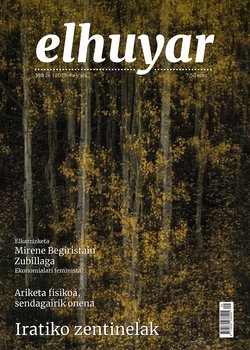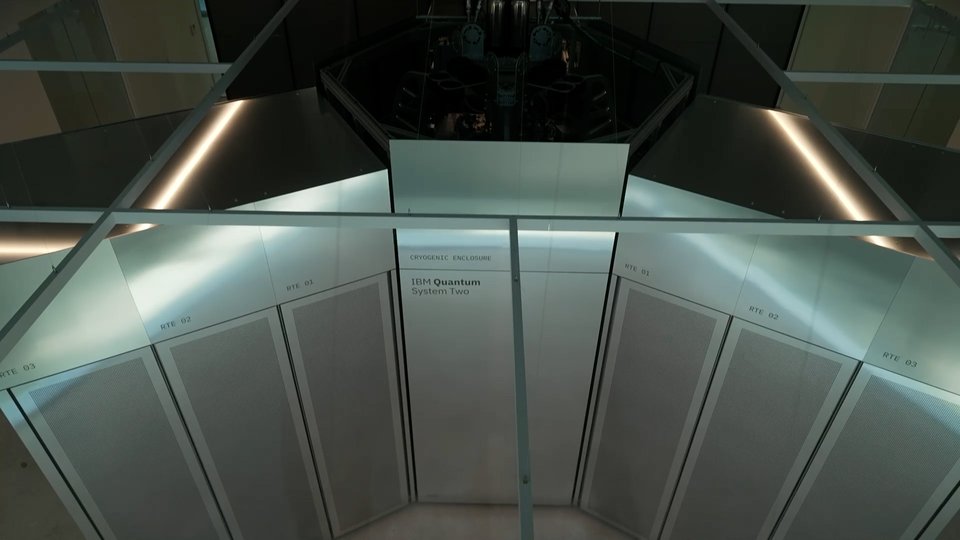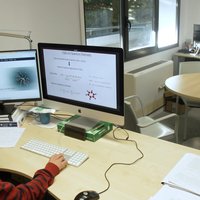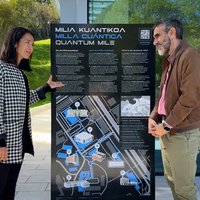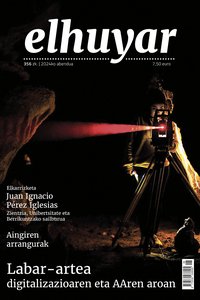Looking at the invisible
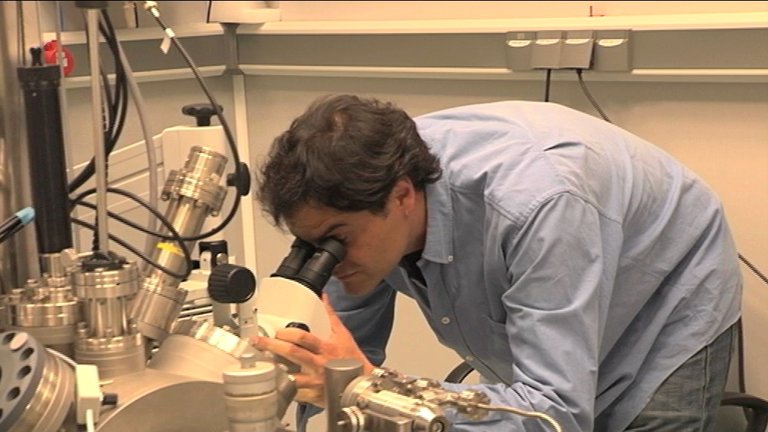
To see: to interpret our environment through the rays of light that reach the eyes. But what if what we want to see is 500 to 100 times smaller than a photon – a particle of light? To see atoms and molecules, light is useless. We're walking blindly.
in the early 1980s, two German physicists working at IBM revolutionized the world of science with an invention that would have earned them the Nobel Prize in 1986: the tunneling microscope. The invention consisted of approaching a surface, a thin tip ending in a single atom, at a distance of a few angstroms. Prior to contact with the tip and the surface, electrical current flows between the two. By measuring this current, a topographic map of the surface can be drawn.
In the basement of CICnanoGUNE, in San Sebastian, there is a microscope of this type. He doesn't see, he feels, like a blind man who reads in the Braille language. The director of the Nanoimaging research group, Nacho Pascual, brought it from Berlin. He designed and built it together with his team.
BY NACHO PASCUAL. ABOUT CICnanoGUNE: When we decided to work under the conditions of this system, there was no such machine and we had to develop it ourselves. It was a big challenge. Although the technology was already known, we wanted to work with cryogenic temperatures: 4° K, i.e. -269° C. This was essential for the atoms to stand still.
At room temperature, the atoms are in constant motion. It would be impossible to examine and manipulate them one by one. A helium cryostat was then attached to the microspopium and the whole was placed in a reservoir filled with liquid nitrogen. In this way they managed to work at 270 degrees below zero.
If the cold for the atoms to stand still is important, the vacuum is essential to keep them clean. This facility operates at a pressure of 10-13 with the same vacuum present in the intergalactic space.
Having a surface composed of stable atoms is very important not only for the study of atoms and molecules, but also for their manipulation. A little closer to the tip of the microscope, the atoms can be transported to another point on the surface. Thus, by moving the atoms one by one, the images that make up this film that IBM has made have been created. But the purpose of manipulating atoms is not to make drawings, but, of course, to study their properties.
BY NACHO PASCUAL. ABOUT CICnanoGUNE: Atoms are bricks of materials. Drugs, fuels, hard disks that store magnetic information... the properties of all materials depend on their atomic composition. It depends on how atoms come together to form larger structures. On the scale of a few atoms, our goal is to build new materials and optimize their performance.
This other image was created by Jingcheng Li of the Nanoimaging group at nanoGUNE. He has extracted the atoms one by one from a silver surface, as if he were extracting the mineral from the quarry. Each atom measures less than two angstroms and pushes them with the tip of the microscope until they form a circumference.
Assisted by JINGCHENG LI. ABOUT CICnanoGUNE: The following is a chain of molecules. We place molecules on a surface to study the chemical reactions between them. Thus, we study their light, their strength, and such properties.
But this is not a normal tunnel effect microscope. Nacho Pascual’s team inserted a small quartz fingerboard at the tip so that they could also study non-electrically conductive materials.
BY NACHO PASCUAL. ABOUT CICnanoGUNE: That's a fashion. Scientists also work according to modes! One of the problems with this microscope is that we use electricity to measure the distance between the tip and the surface, so it only works with conductive materials. We have inserted a quartz fingerboard, like that of the watches, on the edge of which we have glued the tip of the microscope. The tuning fork is always oscillating, and if we measure the variations of this oscillation frequency, we can detect the mechanical interactions between the tip and the sample. This is very useful because even without the passage of current, we can know that the tip is approaching.
Thanks to the quartz fingerboard, the tunnel effect microscope also functions as an atomic force microscope. Two devices in one. But once you start building your own machine, you’ve also added a third function: optical spectroscopy.
BY NACHO PASCUAL. ABOUT CICnanoGUNE: This is one of the advantages of designing and building your own machine! I think it's the only machine in the world that performs all three functions. Using a spectrometer, we measure the photovoltaic effect. In solar panels, for example, when a photon arrives, an electron is emitted. And, conversely, an electron can emit a photon. We do just that, send electrons between the tip and the sample, and detect the electrons that are emitted.
The microscope arrived from Berlin in October and was launched in January. In order to be installed in this laboratory, they had to carry out conditioning tasks that would ensure optimal insulation.
BY NACHO PASCUAL. ABOUT CICnanoGUNE: The tip of the microscope should approach the sample at a distance of about 1 nanometer. If you could see how the walls of this building move, you would see oscillations of several microns. That is, 1000 or 10,000 times that distance. If we left the microscope over here, it would move like this, and it wouldn't be stable. That’s why it’s so important to protect yourself from vibrations.
The microscope itself is suspended by springs inside the cryostat. The entire machine rests on four pneumatic legs, i.e. the air. And the floor of the room is also isolated from the building.
BY NACHO PASCUAL. ABOUT CICnanoGUNE: In order for it to work well in the microscope it must be isolated from the vibrations of the environment. Although we don’t see it, when the cars or the train pass, the ground vibrates. That's why we built it on top of this block here. this is a 30-ton block of cement on four pneumatic legs. This here is a tire from a train wheel. we put a pressure of 7 bar, and we lifted the whole block.
In addition, the laboratory walls are soundproofed and isolated from electromagnetic waves. All so that nothing can damage the measurements. In fact, if we usually say that the work of a watchmaker or surgeon is of high precision, if we talk about working on a nanometric scale, the word precision falls short.
Buletina
Bidali zure helbide elektronikoa eta jaso asteroko buletina zure sarrera-ontzian


